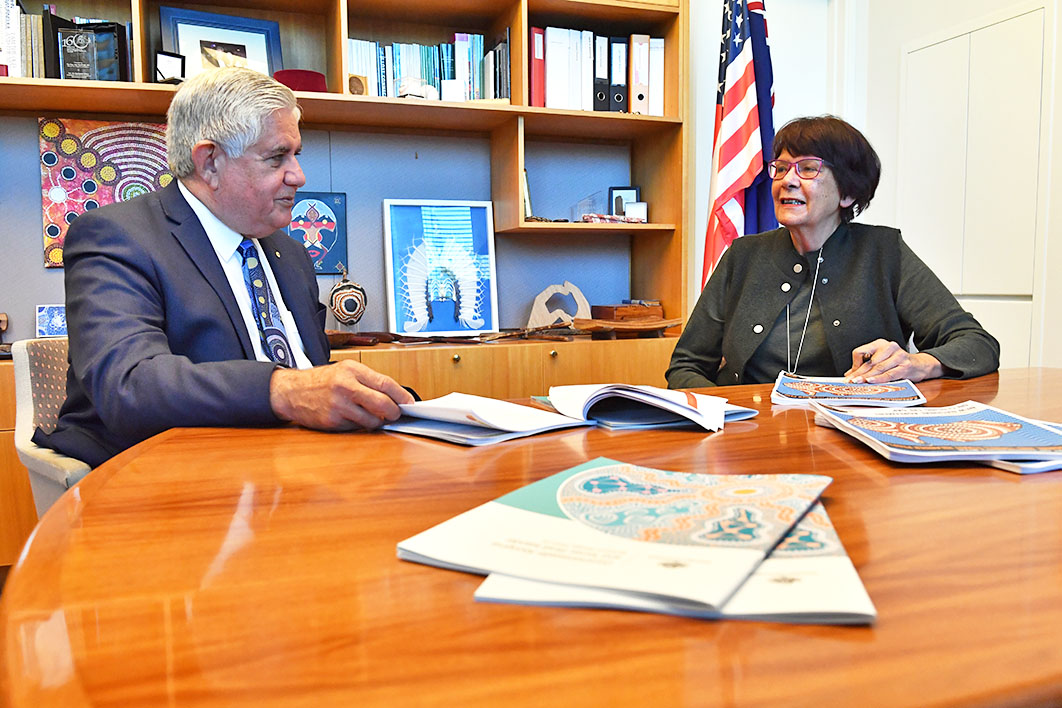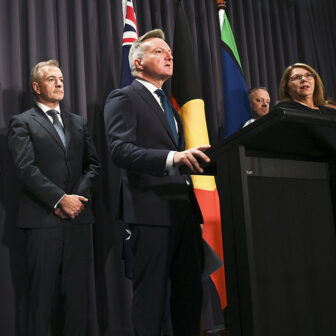The defeat of the Voice referendum represents both a political tragedy and an inflection point for Indigenous policy in Australia. It consigns to history the hope for a single institution reflecting the diverse aspirations of Indigenous citizens and communities, and it crystallises changes in the political and social dynamics of Australian society, particularly within Indigenous Australia.
Recent censuses have documented a quite extraordinary growth in the Indigenous population, largely in southeastern Australia, driven by growing self-identification and rising numbers of mixed Indigenous and non-Indigenous relationships. As a result, the national profile of the Indigenous population is changing, accompanied by even greater levels of income inequality. Very high levels of income inequality exist within the Indigenous community, levels that are greater than those that exist within the non-Indigenous community.
Alongside these shifts has been a growth in the diversity of political perspectives among leading Indigenous figures. The contrasting views of Indigenous No campaigners Jacinta Nampijinpa Price and Nyunggai Warren Mundine, on the one hand, and Lidia Thorpe and author/lawyer Michael Mansell, on the other, are just one example.
The geographical, social and linguistic heterogeneity of Indigenous Australians has long been recognised by policymakers yet only sometimes taken account of. The regionally organised Aboriginal and Torres Strait Islander Commission (1990–2005) was a rare example of a positive recognition of heterogeneity; in other cases — tighter conditions on social security in remote Australia, for instance — the recognition has come with a punitive veneer.
This diversity has increasingly been overlaid (though not replaced) by a pan-Indigenous focus on identity and identity politics that has begun to permeate the national imagination. The emphasis on a single identity — rather than on layered identities, as Noel Pearson advocates — has created a unity with its own fragility.
These strands have created social, economic and political complexities that undercut the possibility of building an enduring consensus among First Nations on virtually any issue. If substantial Indigenous consensus on policy aspirations is just as elusive as it is among the non-Indigenous population, then all-encompassing Indigenous representation is inherently elusive, particularly nationally.
The referendum result alone won’t drive this complexity; it has been emerging for at least two decades. But the vote will inevitably be perceived as a political and societal inflection point. The notion that governments should seek to discern an overarching and representative Indigenous perspective is likely to give way increasingly to multiple Indigenous interest groups, themselves engaged in the cut and thrust of interest-group politics both within the Indigenous domain and between the Indigenous domain and the wider political domain.
Virtually all recent public commentary has been on the politics of the Voice: the campaign, the tactics of the Yes and No camps, the effectiveness of the most prominent advocates, the implications for social cohesion and reconciliation, and the implications for Australia’s international reputation. The shape of the post-referendum policy framework has received almost no attention. Yet it will determine the opportunities available to First Nations citizens and inevitably shape the nation’s future in ways that are difficult to predict but nevertheless consequential and far-reaching.
In a hyper-rational world, the obvious response to the referendum loss would be to press ahead with legislation to create a Voice. After all, if it is important enough to be constitutionally entrenched, why wouldn’t the government seek to establish it legislatively?
We don’t live in an entirely rational world. Prime minister Anthony Albanese explicitly ruled out a legislated Voice before the vote, primarily on the basis that the process of legislating a Voice would become hyper-politicised. Opponents would argue that the referendum result made crystal clear that Australians don’t want a Voice, thus depriving any such proposal of an electoral mandate. Its design would become deeply contentious both in wider political circles and among Indigenous interests. Without constitutional enshrinement, a legislated Voice’s views and policy perspectives would arguably carry less weight and be more susceptible to being ignored by governments.
One alternative path would be to create an appointed Voice, though the prime minister appears to have implicitly ruled this out too. Governments often appoint specialist groups to provide advice; in fact, the previous government appointed a prime minister’s Indigenous Advisory Council in September 2013 with Warren Mundine as its first chair. It was silently abandoned in 2019 when its advice on how best to progress the Uluru Statement and the proposed Voice became politically inconvenient.
Since then, reflecting the triumph of political considerations over rationality, the Coalition government (and now Labor) operated without a formal Indigenous advisory mechanism while simultaneously funding elaborate bureaucratic and legal processes to design and implement a proposed Voice.
The government’s most likely move will be to embrace the role of the Coalition of Peaks, the alliance of eighty-plus Indigenous peak bodies that emerged in early 2019 from discussions between representatives of fourteen Aboriginal community-controlled organisations and prime minister Scott Morrison. Those discussions ultimately led to the National Agreement on Closing the Gap. According to its latest annual report, the Coalition of Peaks directly and indirectly represents more than 800 organisations and at least 550,000 Indigenous people across numerous sectors.
Announcing a greater reliance on the Coalition of Peaks — or, more probably, gradually lifting engagement — has several political advantages. The coalition encompasses a wide swathe of Indigenous policy, it was established and funded by a Coalition government, and it is capably led by its convenor, the experienced former bureaucrat Pat Turner. Perhaps even more importantly, building on the coalition requires no legislation and can accurately be characterised as a continuation of the status quo.
If it pursues this option, Labor will presumably take the opportunity to signal its increased commitment by allocating new Indigenous funding in the coming 2024 budget. One obvious spending opportunity championed by Turner and the Coalition of Peaks is housing, a policy domain with implications for health, education, criminal justice and domestic violence. As the government develops its new National Housing and Homelessness Plan, which will encompass new intergovernmental funding arrangements, it could earmark increased funding to Indigenous communities.
The Coalition of Peaks is, of course, quite different from the proposed Voice. Unlike previous Indigenous representative bodies, it seeks to represent the interests of “community-controlled” organisations rather than the entire Indigenous constituency. Its members cover a broad range of Indigenous interests, but obvious gaps include the educational and economic development sectors. Implicit in any greater engagement would be a shift to engaging with coalition’s constituent peak bodies.
At the core of the Coalition of Peaks is NACCHO, the National Aboriginal Community Controlled Health Organisation, which represents 145 Aboriginal community-controlled health organisations across the country employing around 6000 staff. NACCHO’s members service more than 550 primary care sites delivering more than 3.1 million episodes of care to more than 400,000 people.
Apart from their sheer breadth of activity, NACCHO members have the advantage of receiving mainstream healthcare funding for their services, thus ensuring a substantial level of political independence. That advantage does not extend to most of the Coalition of Peaks’s other members, which rely to a greater or lesser extent on discretionary government funding. So too does the Coalition of Peaks’s policy secretariat, creating a major risk to its continued independence.
As a member of the council overseeing the National Agreement on Closing the Gap, the Coalition of Peaks has guaranteed cabinet-level access to every jurisdiction in the Australian federation. This is unprecedented in modern Australian history, though the reality is that it is outnumbered and outgunned by the sheer institutional heft of the states and the federal government, and particularly by the size and intellectual capital of their bureaucracies.
Of course, governments will continue to engage with Indigenous interest groups outside the Coalition of Peaks, and will draw on specialist advisory bodies where necessary, as already occurs in the mainstream policy domain. When both Indigenous and non-Indigenous interests are involved, governments will continue to appoint Indigenous members to relevant advisory committees.
The advantages of using the Coalition of Peaks to underpin the future framework of Indigenous policy are significant, but there are also significant challenges.
Foremost is the fact that the extraordinarily complex policy architecture of Closing the Gap is unfit for purpose and requires serious attention. Its bureaucratic complexity ties the Coalition of Peaks down in never-ending process, across eight jurisdictions, virtually guaranteeing it cannot focus consistently on strategic policy opportunities. Complicating its work is the fact that the Coalition government shifted political responsibility for most targets to the states and territories and stepped back from any overt leadership role, a move not reversed so far by Labor.
These problems should have been tackled head-on in the Productivity Commission’s recent draft report on the National Agreement on Closing the Gap. Although the report is critical of progress, its strategically underwhelming analysis is a lost opportunity to take stock and shift course to ensure governments take their commitments seriously. The machinery of Closing the Gap will not collapse in the short term, but neither will it survive into the medium term without focused attention.
Governments are inherently conflicted on this issue: reform of the policy architecture and a stronger Coalition of Peaks will inevitably make life harder for them. Visionary political leadership within government, always in scarce supply, will be required to crack this nut.
A second implication of the referendum defeat is that governments and First Nations will be forced to reconsider the preparedness of the Australian electorate (and the nation’s underlying political settlement) to accept treaties as a mechanism for advancing Indigenous aspirations. While many First Nations leaders and their supporters will intensify their calls for treaties, the risk of devoting decades of work to inchoate policy reforms, and the challenges of agreement-making with reluctant governments could fracture Indigenous views on the benefits of such a strategy. Pragmatic leaders could well see better and more immediate uses for scarce advocacy resources.
It is also worth mentioning that while a successful referendum would have paved the way for a vote on an Australian republic, the defeat is likely to dampen enthusiasm in the current decade. Perhaps paradoxically, it may also increase the likelihood of an Indigenous person being appointed as Australia’s head of state in the interim.
Progress on Indigenous constitutional recognition, meanwhile, appears more remote than ever. Short-sighted self-interest has triumphed over visionary reform. The 1967 referendum gave the Commonwealth an implicit mandate to lead on Indigenous policy, one it has progressively walked away from over the past decade. The Indigenous leadership, encouraged by progressive Liberals, decided to shift away from the recommendations of the 2012 report of the expert panel on constitutional recognition and replace it with the Voice proposal, a move that now seems a well-intentioned error of judgement.
Led by Pat Dodson and Mark Leibler, the expert panel recommended the repeal of section 51(xxvi) of the Constitution, which allows the federal government to enact adverse and discriminatory laws based on race, and called for a new provision prohibiting racial discrimination.
The nation’s Indigenous policy framework over the coming decades will inevitably focus on particular Indigenous interests rather than a notional general interest, tempered by more of the same: more rhetoric over substance, more evasion of responsibility, more blame shifting, less transparency and ministerial accountability, and continued policymaking aimed merely at giving the appearance of action.
If they are to force their way into the dominant bloc of interests that controls Australia’s institutions, Indigenous interests will need to look beyond governments for support and as the sole locus of political action. To be effective, they must build alliances, institutionalise the independence of their advocacy capabilities, and create their own policy institutions. They will need to span their diverse aspirations, and build and sustain the intellectual capital necessary to achieve inclusionary policy reforms in the face of opposition from mainstream interests concerned to protect the status quo. Inevitably, this will be a multigenerational struggle. •




